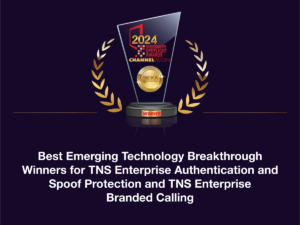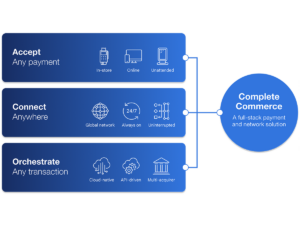Call Spoofing 101 – Defining the Risk to Brands and their Customers
If your caller ID has ever displayed a phone number that looks familiar – or even the name of a brand you know – there is still a chance the call is originating from a bad actor via a “call spoofing” attempt.
Call spoofing can not only put consumers at risk, but it can disrupt the ability of enterprises to reach and engage with customers and damage their reputation. When legitimate calls go unanswered, enterprises lose a critical communications path.
If illegitimate calls are answered and the unsuspecting consumer has their personal information compromised or money stolen, the enterprise may be liable for the loss. This is problematic for any organization, particularly those in ‘high-touch’ industries such as financial services, insurance, healthcare, retail and hospitality.
To understand the tools and technologies available for brand and consumer protection, we must first define call spoofing and the challenges it presents. Keep reading to find out five commonly asked questions about call spoofing.
What is Call Spoofing?
The Federal Communications Commission (FCC) define call spoofing in the following way:
“Spoofing is when a caller deliberately falsifies the information transmitted to your caller ID display to disguise their identity. Scammers often use neighbor spoofing so it appears that an incoming call is coming from a local number, or spoof a number from a company or a government agency that you may already know and trust. If you answer, they use scam scripts to try to steal your money or valuable personal information, which can be used in fraudulent activity.”
What are Common Call Spoofing Scams?
The core concept of call spoofing may be simple, but scammers continue to evolve scams using spoofed numbers. Some of the most common call spoofing scams targeting consumers today include:
Neighbor Spoofing
This technique has become ubiquitous – scammers will use a telephone number that features the recipient’s local area code, sometimes even mirroring the first several digits of the recipient’s own number. Neighbor spoofing has historically been effective as it lures Americans into a false sense of familiarity with the number displayed on caller ID, making it more likely they will answer the call.
Impersonation Spoofing
Fraudsters will spoof numbers belonging to known contacts or reputable organizations to execute scams such as:
- Bank Account Scams: Posing as bank representatives to extract private financial data.
- Government Scams: Posing as government officials to acquire sensitive personal information.
- Unpaid Tax Scams: Posing as IRS employees demanding payment for fictitious tax bills and threatening legal consequences.
- Tech Support Scams: Posing as IT providers scanning for issues with the recipient’s computer in an attempt to install malware or steal information.
How has Artificial Intelligence Evolved Call Spoofing?
The wide availability of generative artificial intelligence (AI) has raised the stakes and the challenge to distinguish legitimate calls from harmful robocalls. Generative AI has made it easier for robocall bad actors to pose as other individuals using simple free tools available on the internet. There have been reports of scams using generative AI to create synthetic voices that imitate loved ones, politicians, enterprise executives and business owners.
Bad actors can clone a person’s voice from anywhere it is recorded – a voicemail message, television and videos or recordings on social media. Once they have the voice on file, they can use open-source software to make the cloned voice say anything they want.
The rise of AI deepfakes in combination with spoofed calling means the benefits of providing high-value customer-facing call information also lies in the authentication and validation of that information. Brand authentication of calls helps protect against caller ID spoofing, ensuring only calls from legitimate brands are delivered with rich content, such as name and logo, to the intended recipient.
What is the Impact of Call Spoofing?
Too often, businesses are unaware that their number has been spoofed until it is too late, and their reputation is harmed, penalties are levied, and their customers are defrauded.
Caller ID spoofing can cause personal distress to subscribers. But the impact of spoofed calls ripples beyond individual cases – Americans lost approximately $1.3 billion in 2023 to scammers impersonating government employees or tech support, according to recent FBI data.
How can Enterprises Protect Against Call Spoofing?
To mitigate the impact of call spoofing on brand reputation, businesses must take proactive measures, using the latest tools and technology to detect and block spoofed calls in addition to validating legitimate ones.
According to TNS survey data 87% of US adults believe that the businesses they use should do more to protect consumers and 75% would pay more for services from an organization that offered the highest level of customer protection.
TNS Enterprise Authentication ensures only verified calls are allowed to reach your customer, while Spoof Protection immediately blocks non-authenticated calls from using your number, effectively neutralizing the threat of spoofed calls. By filtering authenticated calls and providing real-time reporting on spoofing activities, TNS can help enterprises safeguard their reputation, enhance the customer experience and ultimately restore trust to the voice channel.
For enterprises looking to bolster their defenses against call spoofing, visit tnsi.com/enterprise-authentication-spoof-protection.
Jim Tyrrell is Vice President of Enterprise Product Management at TNS with specific responsibility for TNS’ Communications Market solutions.






